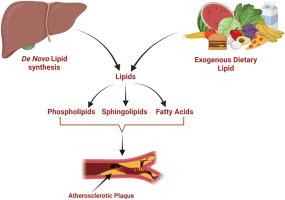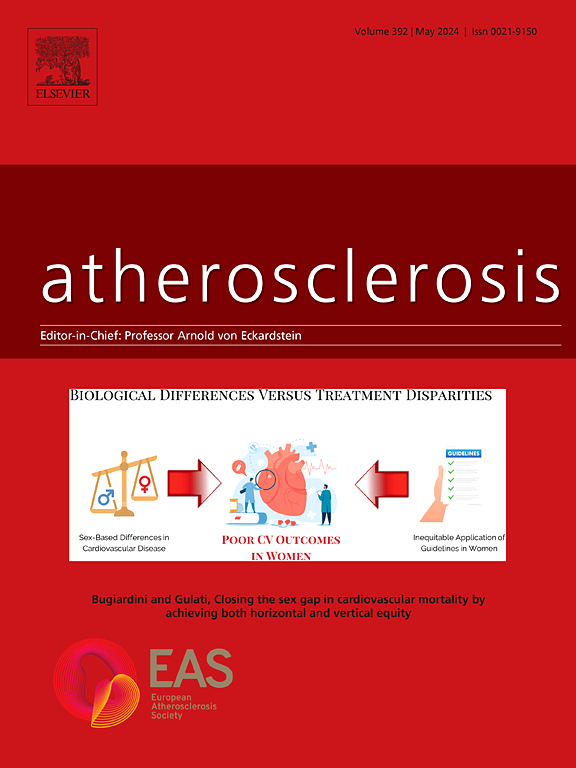De novo lipid synthesis in cardiovascular tissue and disease
IF 4.9
2区 医学
Q1 CARDIAC & CARDIOVASCULAR SYSTEMS
引用次数: 0
Abstract
Most tissues have the capacity for endogenous lipid synthesis. A crucial foundational pathway for lipid synthesis is de novo lipid synthesis (DNL), a ubiquitous and complex metabolic process that occurs at high levels in the liver, adipose and brain tissue. Under normal physiological conditions, DNL is vital in converting excess carbohydrates into fatty acids. DNL is linked to other pathways, including the endogenous synthesis of phospholipids and sphingolipids. However, abnormal lipid synthesis can contribute to various pathologies and clinical conditions. Experimental studies involving dietary restriction and in vivo genetic modifications provide compelling evidence demonstrating the significance of lipid synthesis in maintaining normal cardiovascular tissue function. Similarly, clinical investigations suggest altered lipid synthesis can harm cardiac and arterial tissues, thereby influencing cardiovascular disease (CVD) development and progression. Consequently, there is increased interest in exploring pharmacological interventions that target lipid synthesis metabolic pathways as potential strategies to alleviate CVD. Here we review the physiological and pathological impact of endogenous lipid synthesis and its implications for CVD. Since lipid synthesis can be targeted pharmacologically, enhancing our understanding of the molecular and biochemical mechanisms underlying lipid generation and cardiovascular function may prompt new insights into CVD and its treatment.

新生脂质合成在心血管组织和疾病
大多数组织都有内源性脂质合成能力。脂质合成的一个重要基础途径是脂质合成(DNL),这是一个普遍存在的复杂代谢过程,在肝脏、脂肪和脑组织中都有高水平的发生。在正常生理条件下,DNL对将多余的碳水化合物转化为脂肪酸至关重要。DNL与其他途径有关,包括内源性磷脂和鞘脂的合成。然而,脂质合成异常可导致各种病理和临床状况。涉及饮食限制和体内遗传修饰的实验研究提供了令人信服的证据,证明脂质合成在维持正常心血管组织功能中的重要性。同样,临床研究表明脂质合成的改变会损害心脏和动脉组织,从而影响心血管疾病(CVD)的发生和进展。因此,人们对探索针对脂质合成代谢途径的药理学干预作为缓解心血管疾病的潜在策略越来越感兴趣。本文综述了内源性脂质合成的生理和病理影响及其对心血管疾病的影响。由于脂质合成可以靶向药理学,加强我们对脂质生成和心血管功能的分子和生化机制的理解可能会促进对心血管疾病及其治疗的新认识。
本文章由计算机程序翻译,如有差异,请以英文原文为准。
求助全文
约1分钟内获得全文
求助全文
来源期刊

Atherosclerosis
医学-外周血管病
CiteScore
9.80
自引率
3.80%
发文量
1269
审稿时长
36 days
期刊介绍:
Atherosclerosis has an open access mirror journal Atherosclerosis: X, sharing the same aims and scope, editorial team, submission system and rigorous peer review.
Atherosclerosis brings together, from all sources, papers concerned with investigation on atherosclerosis, its risk factors and clinical manifestations. Atherosclerosis covers basic and translational, clinical and population research approaches to arterial and vascular biology and disease, as well as their risk factors including: disturbances of lipid and lipoprotein metabolism, diabetes and hypertension, thrombosis, and inflammation. The Editors are interested in original or review papers dealing with the pathogenesis, environmental, genetic and epigenetic basis, diagnosis or treatment of atherosclerosis and related diseases as well as their risk factors.
 求助内容:
求助内容: 应助结果提醒方式:
应助结果提醒方式:


